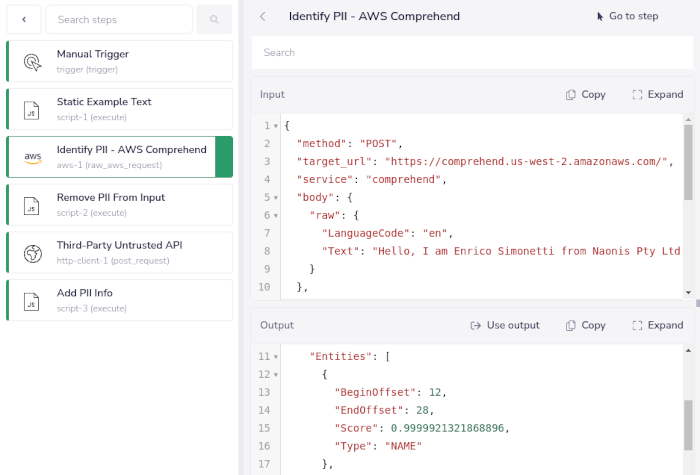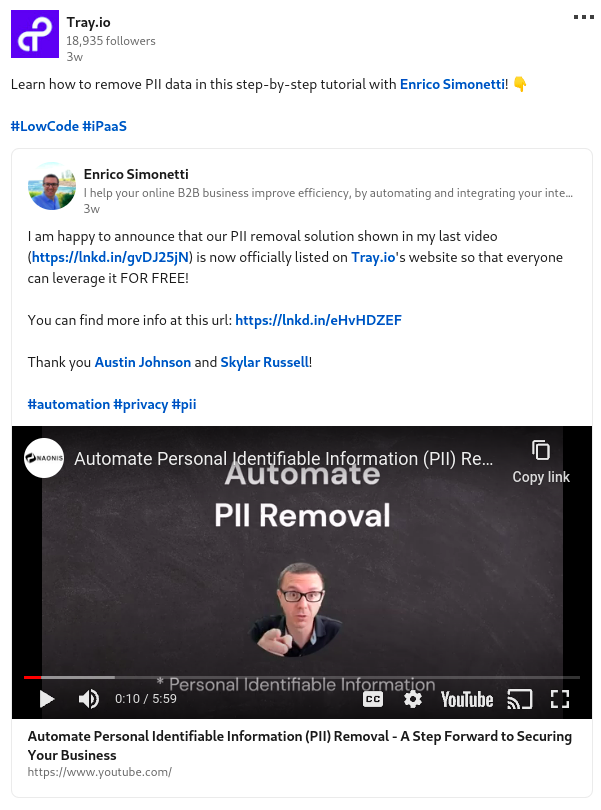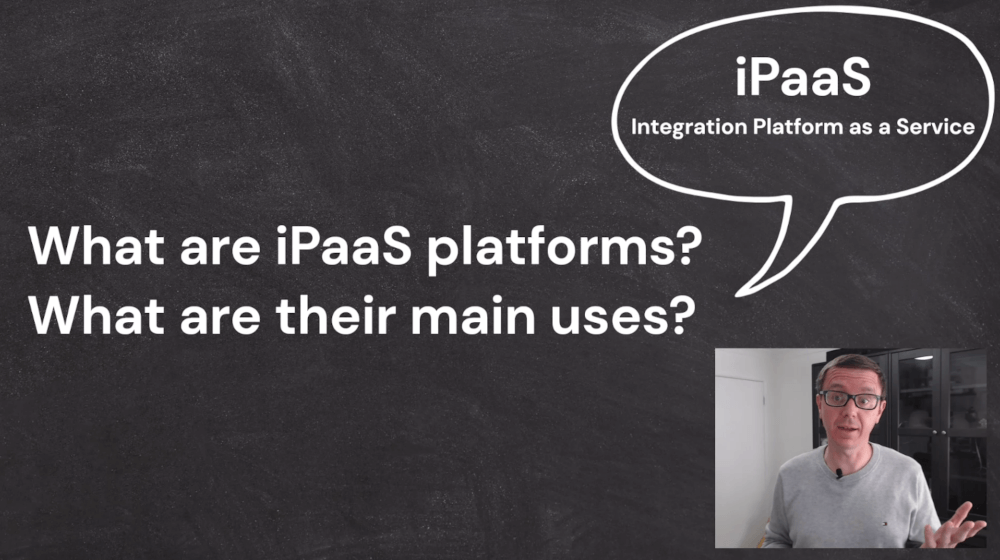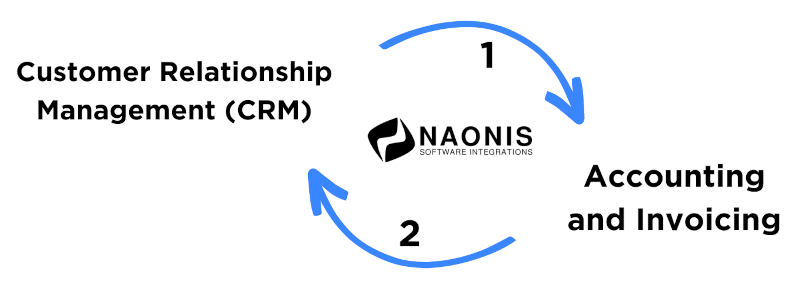Automate sensitive data removal
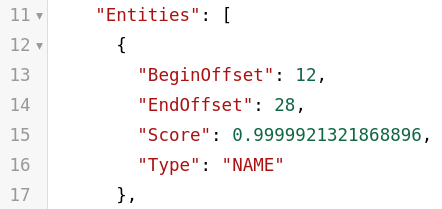
Identify and remove sensitive PII from your data with Tray.ai and AWS Comprehend
We explore a crucial topic for businesses: identifying and removing sensitive Personal Identifiable Information (PII) from data. This topic and approach is especially useful today when working with Generative AI API: OpenAI GPT-4 and we might not want to send to OpenAI our sensitive data.
Learn about the reasons businesses need to tackle this issue, including compliance with regulations like GDPR and ensuring data security. Discover a powerful solution leveraging our partner Tray.ai, an iPaaS and automation platform, and Amazon AWS Comprehend service API.
Learn About Our Tray.ai Services!
PII removal with Tray.ai and AWS Comprehend API by Naonis
Misplaced sensitive data?
- Have you ever seen data stored in the wrong place within your Customer Relationship Management software (CRM), or any other internal system?
- Has someone within your business seen unauthorised sensitive information due to human error?
- Does your business fully trust third party APIs with your customer’s PII data? Some recent examples include the ubiquitous Generative AI API: OpenAI GPT-4 where PII might be leveraged to train further the AI models
Tray.ai + Amazon Comprehend API = removed sensitive PII data!
Now you have a solution: an automated and elegant mechanism to detect and redact PII sensitive data. An automated second set of eyes.
We demonstrate a step-by-step process, guiding you through identifying, removing, and safely storing PII data. This essential solution can help you with compliance, data security, and trust.
Watch the video for further details!
Key points covered
- Understanding the importance of sensitive PII data removal for businesses
- Tools used: Tray.ai and AWS Comprehend service API
- PII removal process demo
Learn more about Tray.ai and our Services
Our work has been featured as Tray.ai snippet
You can also access the solution for free as a Tray.ai snippet right here! (edit: snippet link no longer available), and if you are not yet a Tray.ai customer and are interested in becoming one contact us!
Do you want to discuss your Tray.ai needs?
Getting help is super simple: you can reach out for an initial conversation about how automation and integration can be beneficial to increase efficiency within your business.
Automate sensitive data removal FAQ
Why is it essential to remove Personal Identifiable Information (PII) or sensitive information from business data?
Removing sensitive data or PII is crucial for compliance with regulations like GDPR, ensuring data security, and avoiding unauthorised access or exposure of sensitive information.
A tangible example covered in the video to help limit the potential exposure of sensitive information is to redact personally identifiable information before calling an API.
In our case we referred to OpenAI’s GPT-4 generative AI API, showcasing the practical importance of PII removal in real-world common scenarios.
How can businesses identify and remove sensitive information from their data?
The video demonstrates a solution using Tray.ai, an iPaaS and automation platform, along with AWS Comprehend service API.
This combination provides an automated mechanism to detect, redact, and then safely store PII data.
Why choose AWS Comprehend for PII removal?
AWS Comprehend is chosen for its readiness, availability with AWS accounts, the fact that most SaaS software available today is hosted already in AWS (and therefore the data contained within those softwares), and finally the assurance that Comprehend does not use input/output text for its AI model’s training.
How is the PII removal workflow structured in Tray.ai?
The workflow involves generating a demo data set, passing it to AWS Comprehend for PII identification, removing identified data using JavaScript code, and potentially restoring the data if needed.
The video provides a detailed overview of the workflow components.
What are the benefits of using Tray.ai and AWS Comprehend for PII removal?
The combination of Tray.ai and AWS Comprehend provides businesses with an automated and elegant mechanism to detect, redact, and securely store PII data.
This solution helps ensure compliance, enhance data security, and build trust.
We also collaborated with Tray.ai to release the snippet used for this demo for public consumption, so that you can use it too!
Might also be interesting
Automate sensitive data removal in AI & CRM systems securely
Automate Personal Identifiable Information (PII) Removal!
A step forward to securing Your sensitive business data.
An introduction to Tray.io
Have you heard about Tray.io? Curious to learn more? We have just the content for you!
All trademarks mentioned on this page are the property of their respective owners. The mention of any company, product or service does not imply their endorsement.

